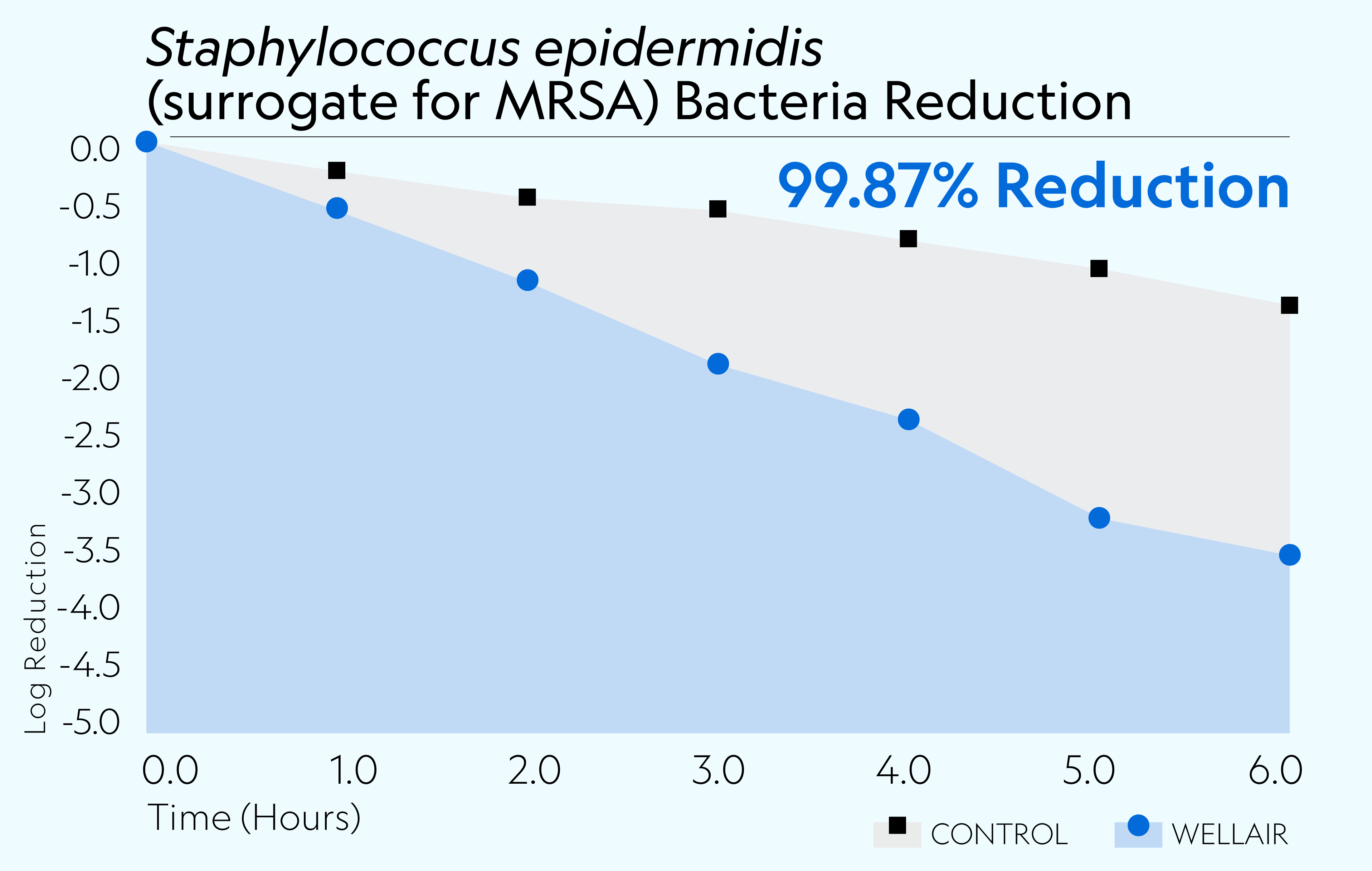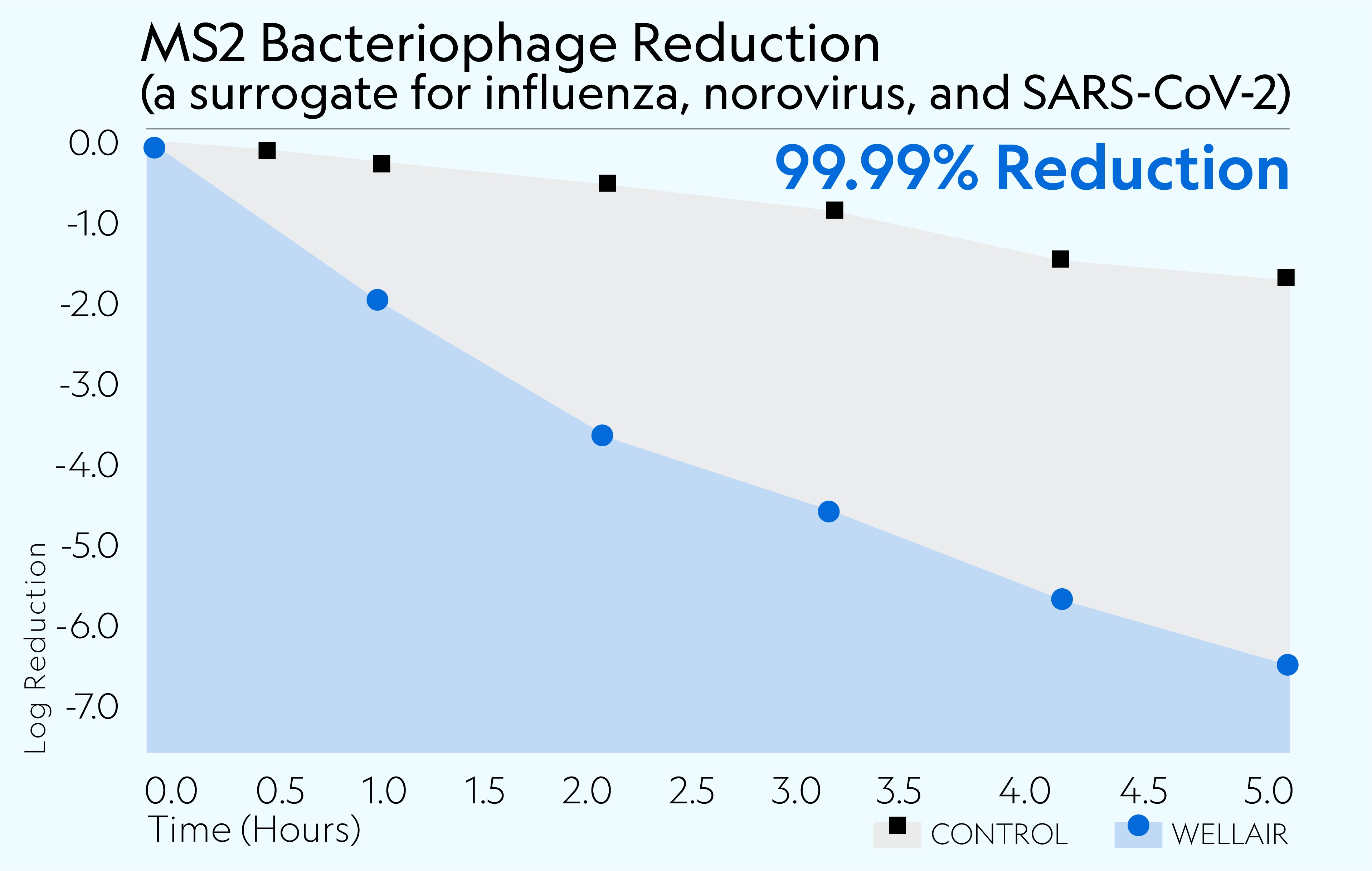Bioaerosols Reduction
- Authors
- Jamie Balarashti, Study Director
- Facility
- Aerosol Research and Engineering Laboratories, Kansas
- Download
- Full Report
Objective
To evaluate the efficacy of the Protect 900 on neutralizing bioaerosols. The device was assessed on four aerosolized biologicals: Staphylococcus epidermidis, MS2 bacteriophage, Aspergillus niger fungus, and Bacillus subtilis endospores.
Methodology
A large sealed aerosol test chamber was used to replicate a potentially contaminated room environment and to contain any potential release of aerosols into the surrounding environment. The chamber was equipped with a Protect 900, filtered HEPA inlets, digital internal temperature and humidity monitor, external humidifiers (for humidity control), lighting system, multiple sampling ports, aerosol mixing fans, and an HEPA filtered exhaust system that were operated with a wireless remote control. For testing, the chamber was equipped with stainless steel probes for aerosol sampling, a port for bioaerosol dissemination into the chamber for the bacteriophages and vegetative cells, and a dry powder eductor for the fungal and bacterial spores.
Summary of Results
Test results show that the Protect 900 was extremely effective at reducing viability of bioaerosols in all conducted studies:
99.87% reduction of Staphylococcus epidermidis bacteria
99.99% reduction of MS2, a surrogate for influenza, norovirus and SARS-CoV coronavirus
99.1% reduction of Aspergillus niger mold
86.63% reduction of Bacillus subtilis bacteria spore

